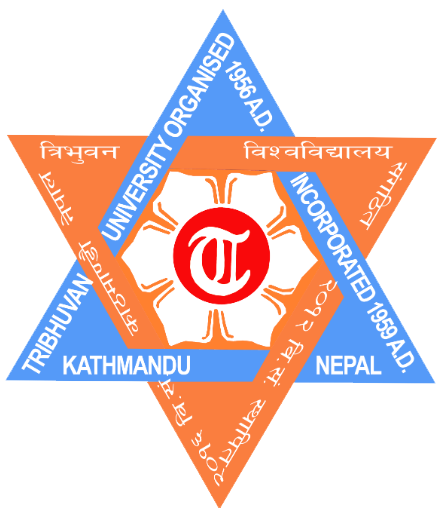Tribhuvan University (TU), established in 1959, is the first national institution of higher education in Nepal. The Central Administrative Office and the Central Campus of the university are located on the north eastern facade of Kirtipur, an ancient and small town located five kilometers away from Kathmandu city centre. The university covers over an area of 154.77 hectares (3042-5-2 ropanis) of land at Kirtipur.
40After the second democratic movement of 2006, the Prime Minister of Nepal is the ceremonial chief, the Chancellor of the University, whereas the Minister of Education is the Pro-Chancellor. The Vice Chancellor is the Chief Executive of the university. Academic programmes are headed by the Rector the financial management and general administration are regulated by Registrar under the leadership of the Vice Chancellor.
Tribhuvan University is a non-profit making autonomous institution funded by the Government of Nepal. On January 8, 2013, the government of Nepal has principally agreed to declare Tribhuvan University as the Central University.
There are five institutes and four faculties under which 40 central departments, 62 constituent campuses, and 1062 affiliated colleges in different disciplines are running. Likewise, there are four research centres in TU Being one of the largest universities in the world in terms of its size and the diversity of programmes, it has been able to fulfill the requirements of large number of students.
Main objectives of TU
The university was established with the following objectives:
-
To prepare capable human resources required for the overall development of Nepal
-
To impart standard higher education
-
To protect and develop national culture and tradition
-
To involve in extensive, empirical and timely creation of knowledge and research in the fields of arts, science, technology and vocation
TU Senate
It is the supreme decision-making body on policies, budget, and rules and regulations for running the university. It consists of 52 members.
Councils of TU
There are 4 councils constituted as major decision making bodies of the university.
Executive Council
Executing the decisions of the Senate, making decisions on grants, and appointing the university officials are its major functions. It consists of 7 members.
Academic Council
The academic council makes decisions on educational policies and practices regarding curricula, teaching, examinations and research and comprises of 50 members.
Research Coordination Council
It formulates policies on TU research activities, approves guidelines for researchers and coordinates the functions of university level research organizations. Research Directorate is the secretariat of the council. The council consists of 27 members.
Planning Council
The planning council performs an advisory role of preparing short and long-term plans, developing annual programmes and evaluating the implementation of programmes. It consists of 29 members.
Academic Programmes
The executive officials and the academicians in Tribhuvan University have been engaged in teaching and research activities. It aims to improve pedagogy through capacity building projects through collaboration with other universities across the world. Now it has established its relations with more than 170 universities and educational institutions across the world and aims to increase the number for more cooperation on substantial grounds. With this change this university expects to raise its standard to the high world ranking.
Tribhuvan University is committed to makeing it a source of knowledge and the centre of quality education, setting up a culture of learning in the country and promoting the notion of national and global peace and harmony. Recently, has started semester system in master's degree courses and is in the process of introducing this system in undergraduate level too. This systemic change was introduced to enforce the academic calendar, to make students full time students dedicated to their studies, to reduce financial burden on students and their parents by making the students complete the degree in time, to respond to the growing concern of the stakeholders about enhancing the academic quality of university education through academic rigor, to revitalize the fame, popularity, credibility and contribution of the university as the oldest centre of higher education and the leading university of Nepal.
Adopting the semester system is really going to prove a daunting task for such a large university spread all over the country. However, if the nation prioritizes education and gives desirable financial support to the university, TU will definitely move ahead on the path of achieving academic excellence and will be able to supply capable manpower to meet the growing challenges of the time.
TU conducted its programmes only through its constituent campuses prior to 1980. As the number of students willing to acquire higher education was increasing day by day, it was not possible for the university to accommodate all the students in the constituent campuses. This situation led to the establishment of colleges in the private sector. From 1979 –80, TU started providing affiliation to private colleges to conduct various programmes at different levels. One thousand eighty four (1084) private colleges spread all over the country have so far received affiliations from TU.
TU has 7966 teaching faculty and 7230 non- teaching staff including the support staff in its constituent campuses. The total number of employees is 15196 including 124 new posts of the Manmohan Cardiothorasic Centre.


